Before creating a strategy, I thought it would be useful to gather some key facts about the game industry, which could help me develop a plan for the upcoming weeks.
Market growth in the industry has risen by over 100B$ in the last few years and is expected to reach 1,000B$ by 2032. Revenue growth increased from 2018 to 2021 from 14.2% to 21.2%. By 2023 it had increased by 8.4% but was then followed by a decrease to 11.3% the next year and is expected to continue declining steadily (J.Clement, 2023). The number of employees in the industry in the UK was 13,000 in 2011 and has reached 47,000 in 2022 (J.Clement, 2023). However, this increase in employment in recent years has steadied out.
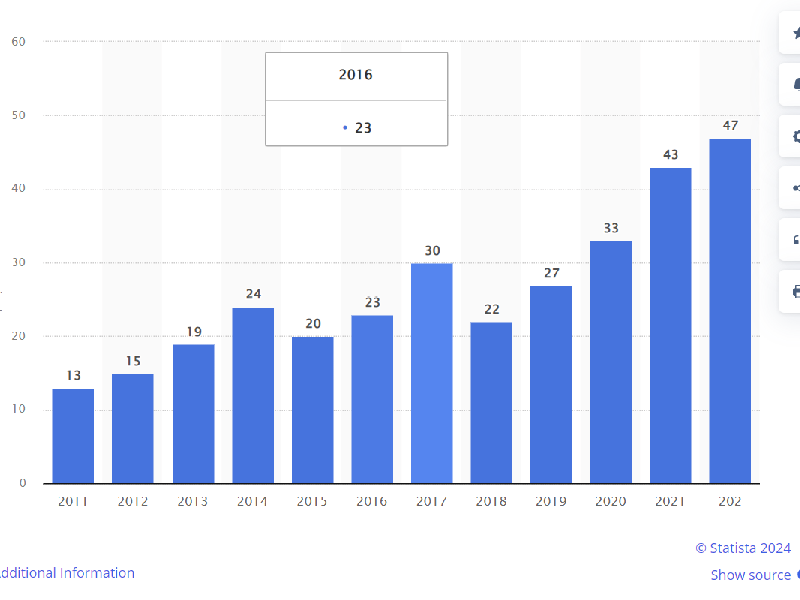
Looking at these facts, it can definitely be seen that the industry has been growing and will continue to grow, but there is a degree of uncertainty, and the growth is not always by large amounts.
Since 2023, game studios across the world have been hit with waves of mass layoffs. According to Eurogamer (Dring, 2021), this has mainly been due to sales falling, costs rising, market growth slowing down and an too much emerging competition.
With this information in mind, it was very important that I created the best plan possible and that I was able to make myself stand out to potential employers.
When developing a presence on social media, it is important to have people or companies that you look up to. From these accounts, you can get inspiration on how to plan your own social media journey.
For myself, I mainly looked up to bigger names specifically in the game industry. This was mostly different companies and people from different job roles. As a game designer, I followed a large variety of different people with different game related job titles such as environment artists and level designers.
I also followed several larger game studios and technology companies to stay up to date on new information and I also followed some of my favourite smaller studios and keep updated on those as well.
LinkedIn also has many different groups that share knowledge on the game industry, whether it is about yearly analytics, employment trends and opportunities or up to date information on new game releases and, major innovations in the industry. For example, I found a small group of game design and development student that created a LinkedIn page, that goes by the name of NGL Gaming (@NGLGaming, 2024) on LinkedIn, that is dedicated to helping game student promoting themselves and get into the game industry.
The first important part of my strategy was choosing what social media platforms to use, and how I would use them. LinkedIn was a mandatory platform, and we were required to use at least one more option. I eventually decided to use Instagram as my second choice, and I also plan on expanding to new social media platforms like TikTok in the future.
I believe the combination of LinkedIn and Instagram was the best choice. LinkedIn is the perfect place for talking about developments in your projects and how you are becoming better at what you are doing, especially because your posts on LinkedIn are still able to reach different people after a week of it being live. It is also a great place to connect with people from your industry. On the other hand, Instagram is a great option for showing off high-quality work, from renders of 3D models or demo videos or even animations, and quickly drawing people to your profile.
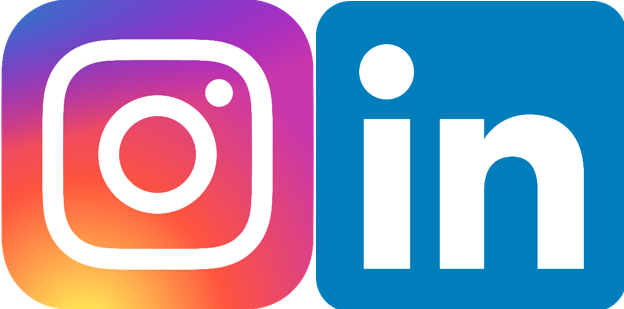
The next step was creating a brand. Having a set brand, including colours and logos, are a great way to help promote yourself on social media. Considering this I wanted to create a brand that was able to represent me and my interests.
At first, I struggled with developing ideas for colours and a theme for my logo, but after some time of trying to come up with ideas, I used an online colour palette generator by Canva (Canva, 2001). This tool involved uploading an image and creating a colour palette by looking at the different colours and theme of the image. This was a really helpful tool as it also allowed me to link my colour palette to my interests. My main interest that I wanted to build my brand around was my love for sci-fi and space themed media, including games, movies and TV shows. I used a variety of images from movies like Star Wars (Star Wars: Episode V The Empire Strikes Back, 1980) and Games like Destiny 2 (Destiny 2, 2017), and I was left with a large variety of different colour themes. I found that in a lot of the images I used, lighter shades of blue were a common colour, so I decided to build my brand around that colour.

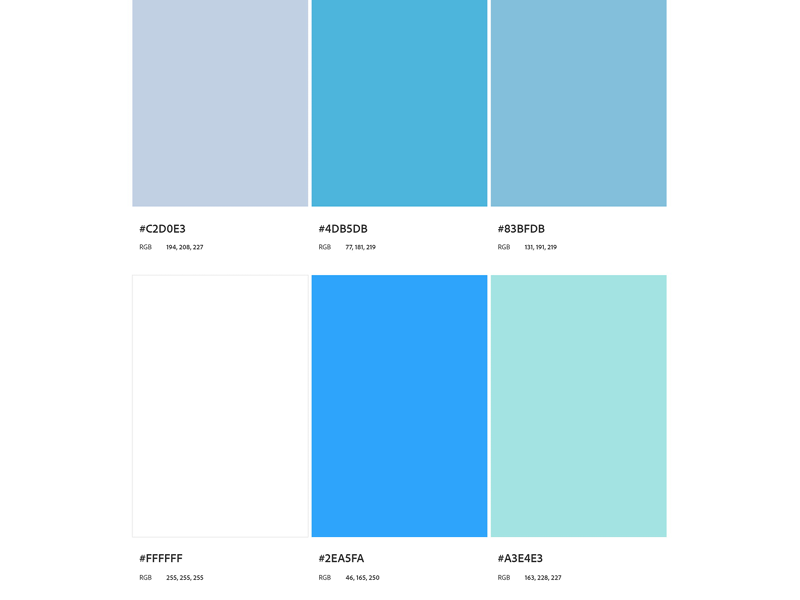
The next step was to create a logo using the colours I had just gathered. I wanted to keep it consistent and link my logo to my interest in sci-fi and space, so I created a simple planet design in Adobe Illustrator (Adobe Illustrator, 1986), that also featured some Game controller symbols, which helped display my role as a game designer.


With the brand and the platforms in place, my next step was creating a time plan. Engagement levels fluctuate throughout the week and at different times of day so it is important to post at the right time. LinkedIn has higher engagement in the week and less over the weekend with Tuesday, Wednesday and Thursday seeing higher levels of engagement than other days, while Instagram has high levels of engagement on most weekdays. The best time of day to post on LinkedIn is in the morning around10AM to 12PM. The optimal time to post to Instagram is slightly earlier around 8AM to 9AM.
I ultimately decided on a time of around 11AM with some forgiveness time toward 1PM. This allowed me to make any last second changes to scheduled posts. I also decided to post on LinkedIn every Wednesday, and to Instagram every Thursday. I also reserved Saturday in case I had any additional content I wanted to share.
Next, I created an Excell document that included information about posting for the duration of the project. This included a picture or video to go along with the post, a short description or caption, relevant hashtags and a column where I could start tallying up my engagement.
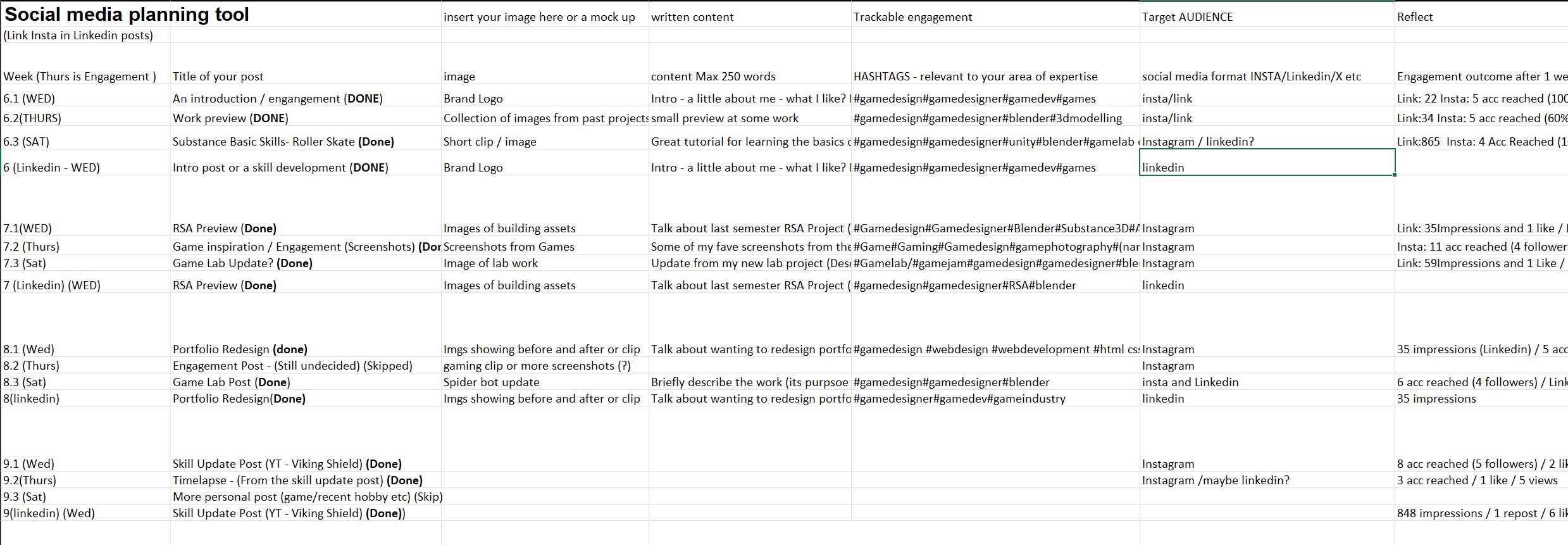
After the project had been fully planned it was time to start making my accounts and creating content to post. Firstly, I created my accounts, displayed my profile with my brand colours and logos and placed my portfolio link in my bio. The first post I made on each platform served as an introduction to myself as I spoke about some of my skills and what people can expect to see from my account.
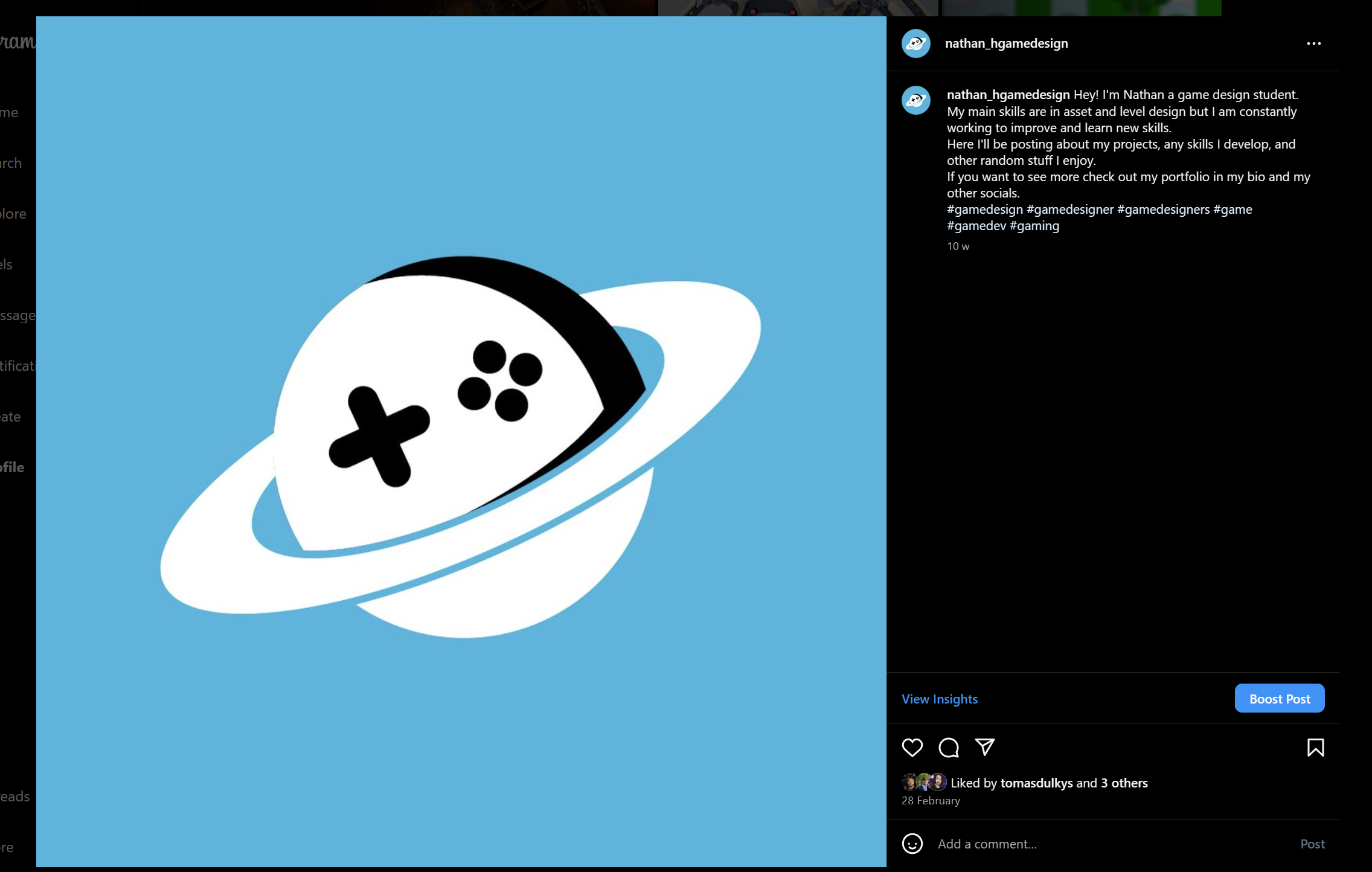
After this, I started experimenting with different styles to my posts so I could see what would bring the most engagement.

In this example, I showed off some work from my previous RSA project and I used my blue brand colours to accompany the 3D models. The engagement was fine at first, but it slowed down after a few days. I created my next post, this time experimenting with using higher quality renders.
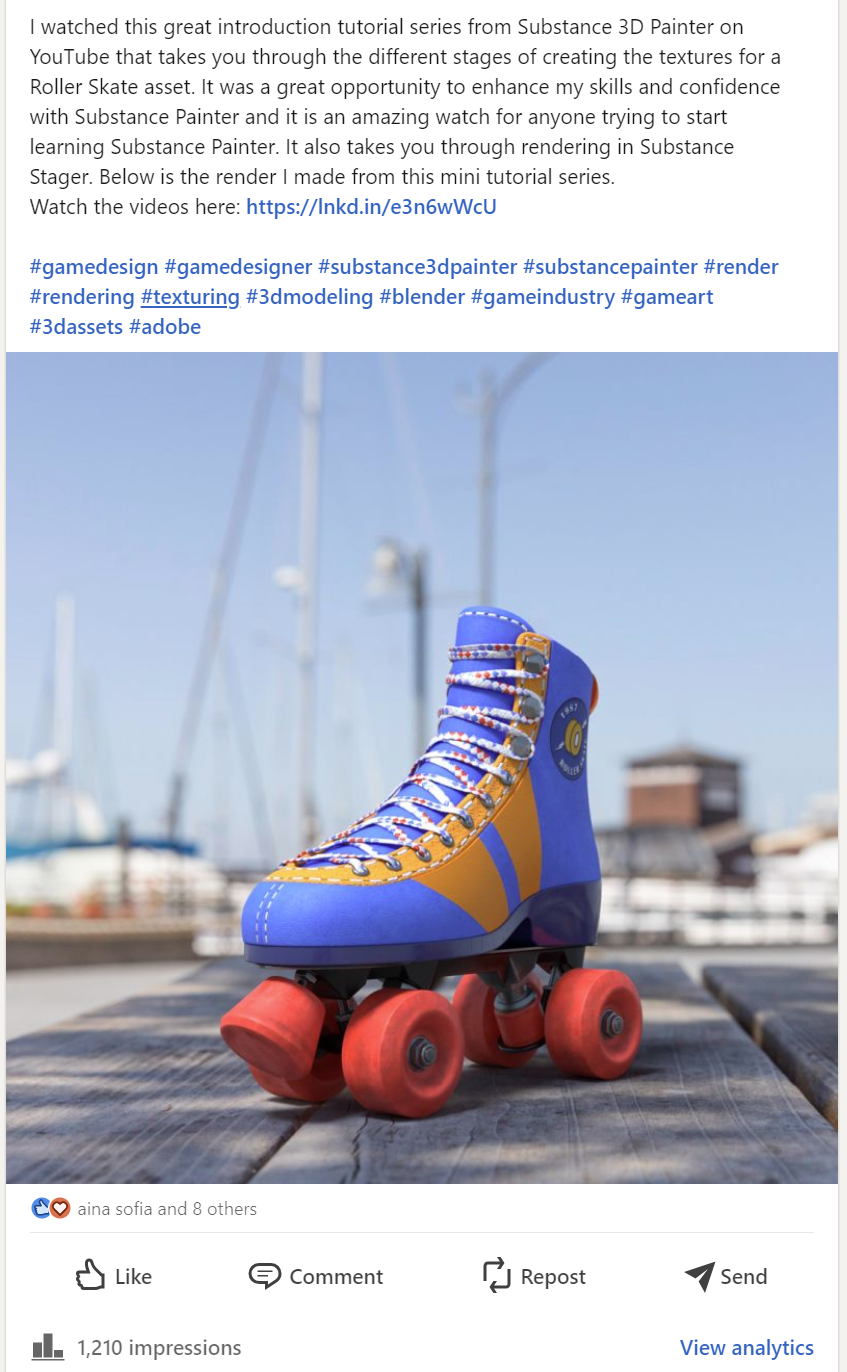
I immediately saw better engagement in this post and continued to gain great levels of engagement after a week of the post being live. I also saw increases in follower counts, profile viewers and search appearances after this post. Because of this success, I decided to reach that same level of quality with my next posts.
Additionally, I created a mini-series of posts on Instagram that I called game inspiration. In these posts, I took screenshots from my favourite games or games I have played recently, and I talked about what they each do well, and how they can provide inspiration to designers and developers.
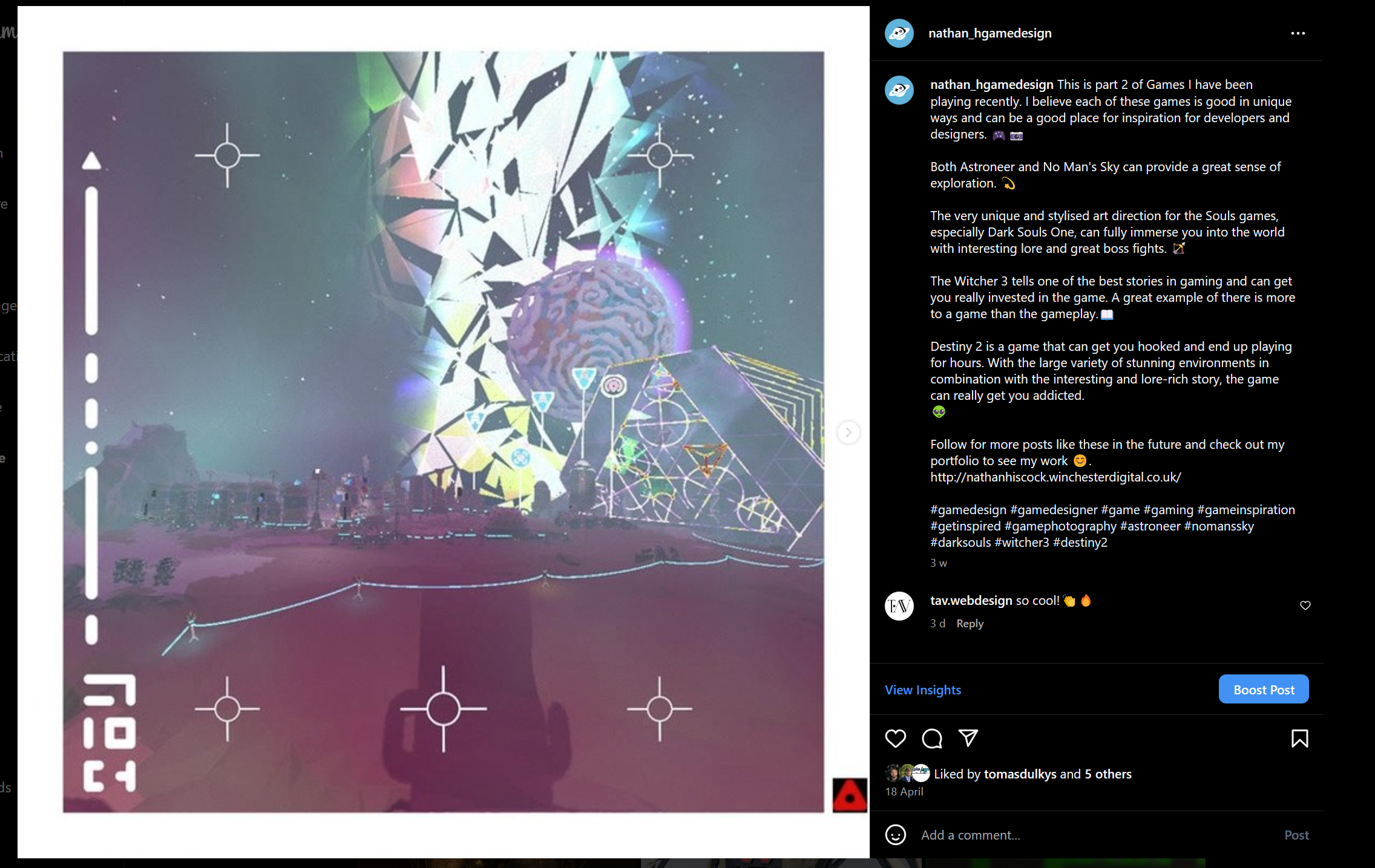
Surprisingly, these were some of my best performing posts on Instagram. I believe that this may have been down to the different hashtags I used. Instead of using hashtags like #blender and #3Dmodelling which both have thousands of new posts every day, I used hashtags for the titles of each game as well as #gamephotography and #gameinspiration. These hashtags receive fewer posts each day and were able to reach more people.
Towards the end of the project timeline, I started to gather the analytics form the duration of the project.
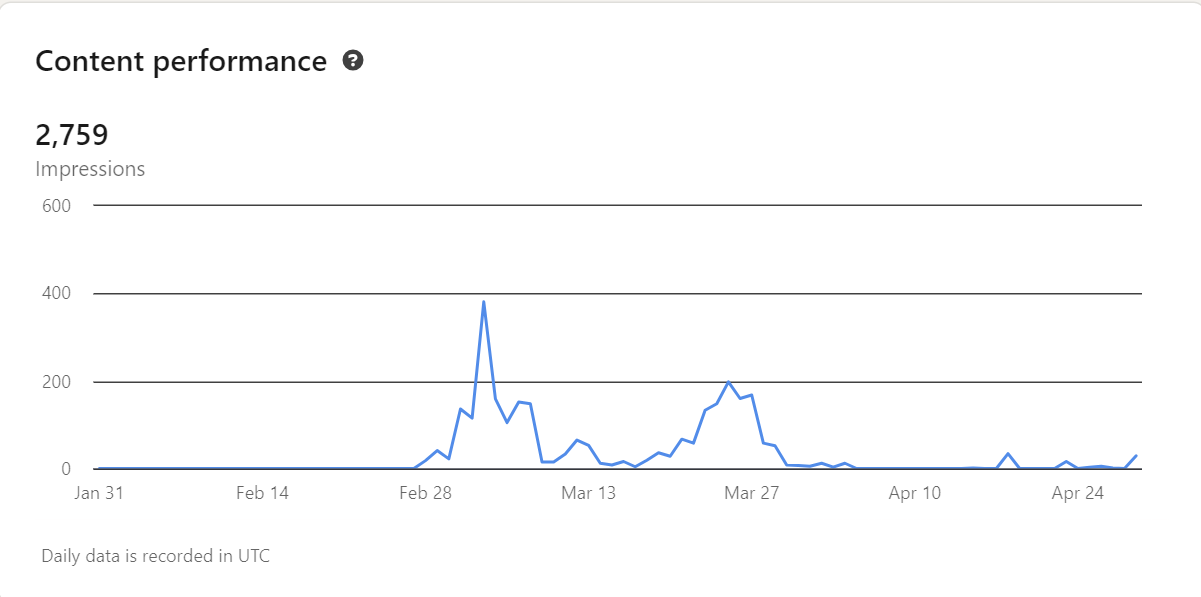
The analytics shown above represent the total amount of impressions my posts received on LinkedIn. There was a large spike in one of the early weeks, which is when the roller-skate post went live. I saw another peak during March, which is when I released a rendered video and timelapse of a Viking Shield asset I had been working on. My impressions then dipped and stayed quite low. This was most likely due to that time frame being the easter break. A lot of my followers and connections at first were classmates, so it makes sense that their activity on social media across the easter break was low.
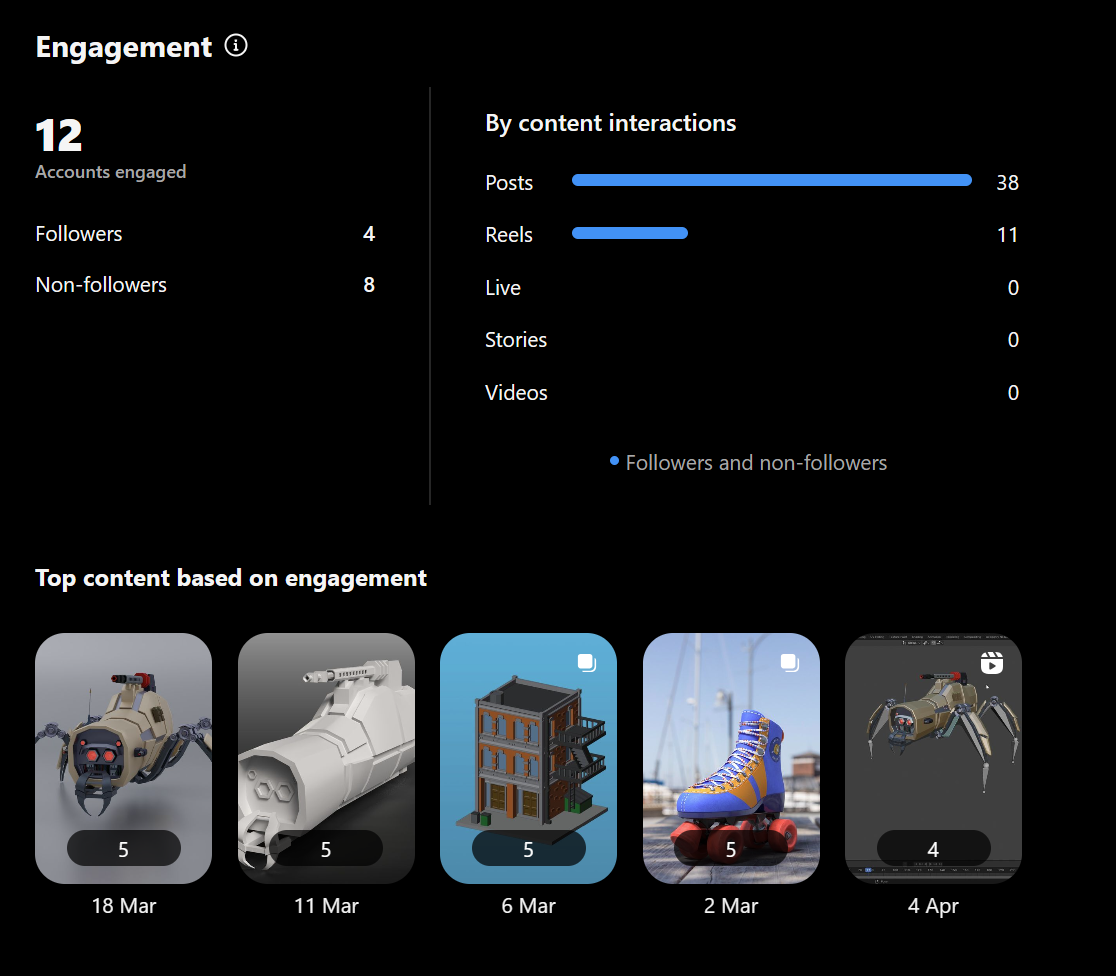
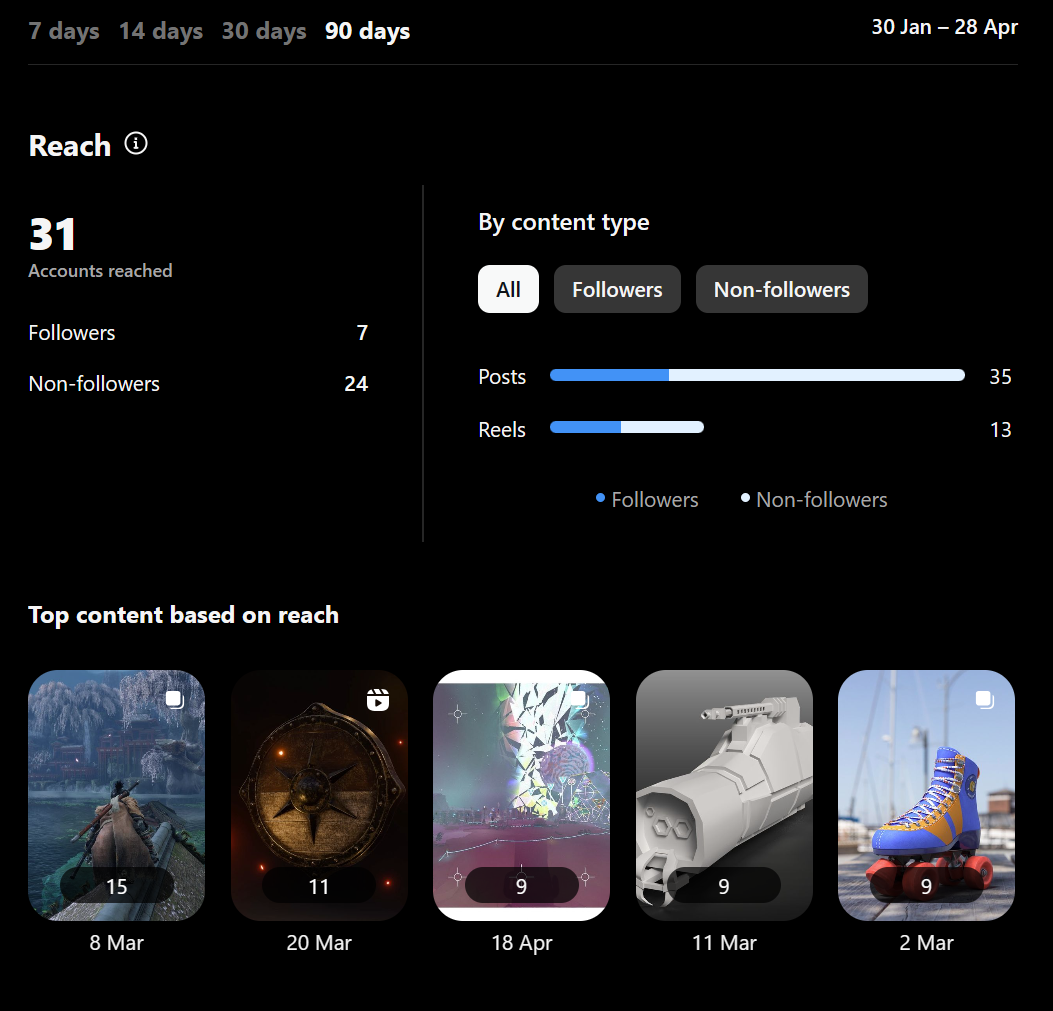
The analytics shown above represent my total reach and engagement on Instagram. The trend here was very similar to my LinkedIn analytics, so I assumed the reasons for that were due to the same reasons why my LinkedIn analytics dropped at certain times.
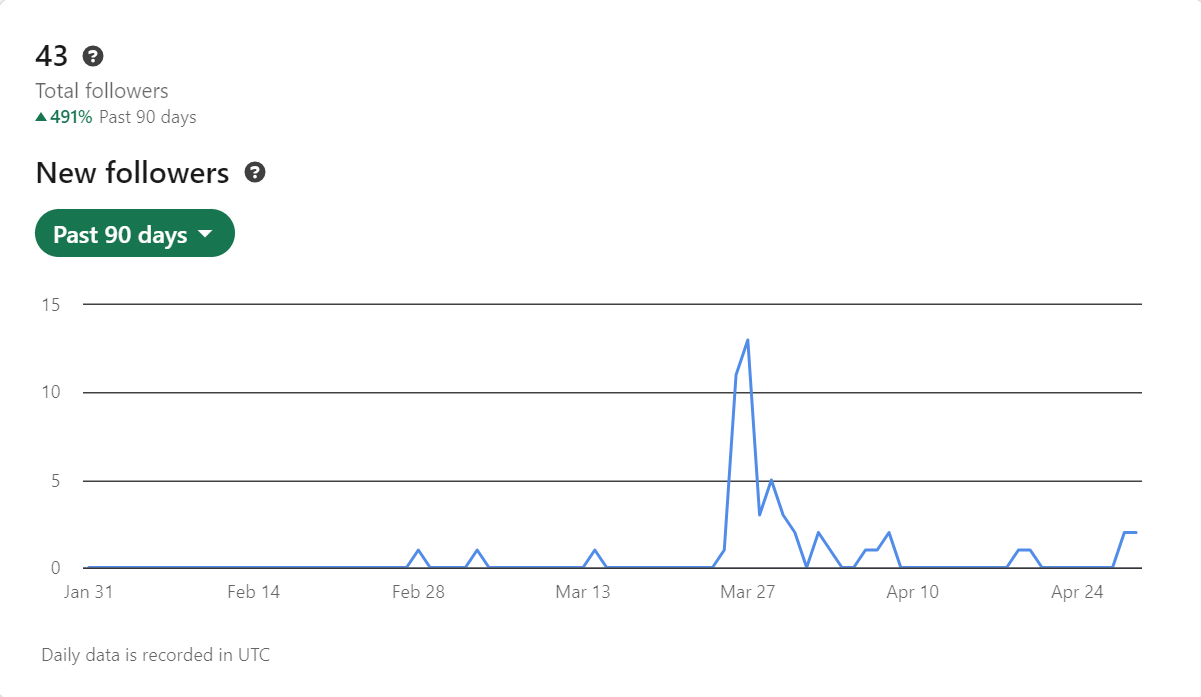
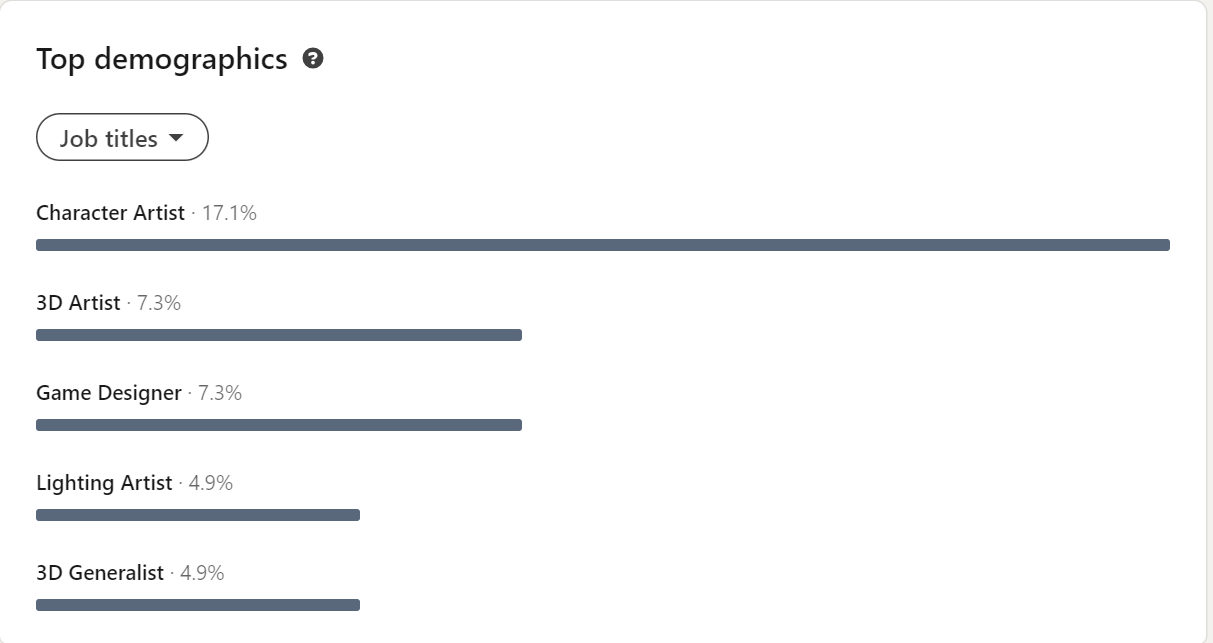
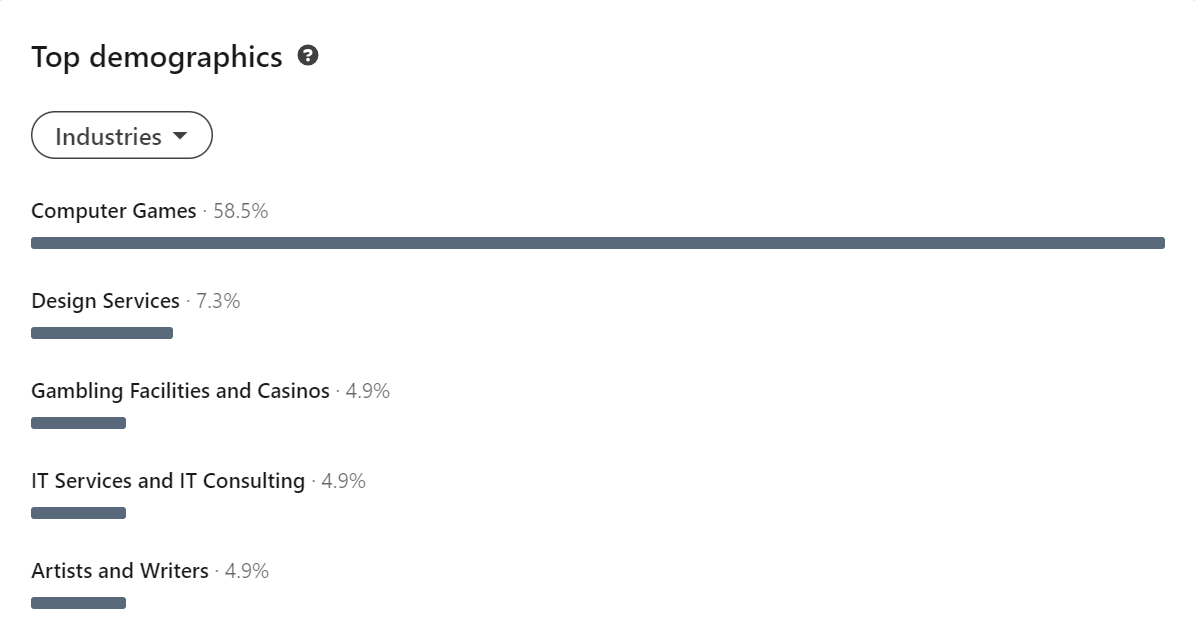

The images shown above represent different statistics about my new followers. Before starting the project, I had a goal of reaching my ideal audience of people from the game industry, whether it was level or character design, or even sound design.
After looking at these analytics, it was safe to say that I reached that audience with over 50% of my new followers being in the game industry and the top job titles including Character artist, 3D artists and Game designer.
I was also able to reach a lot of people who were based locally, which was a separate goal that was a part of my Year 3 proposal project.
In conclusion, there were a lot of things that went well in this project, and I was able to reach a lot of my goals. I was able to make new connections, reach my targeted audience as well as get some good engagement on my posts. However, not everything went smoothly, for example, I found that my consistency dropped in the last few weeks, and I struggled to get content ready to post, resulting in them being delayed slightly. I mainly wanted to promote high quality work, which takes a lot of time to prepare, which is why my consistency dipped.
Going into the future, I plan to revise my time plan to one post per week on each platform. This way I can give myself enough time to get content ready. In addition, I plan to interact with more posts and repost more content. I also want to start including more branding in my posts such as my logo featuring in the top corner of an Instagram post. I have some smaller projects planned that I can share in the future, and I already have some ideas for future posts and new topics.